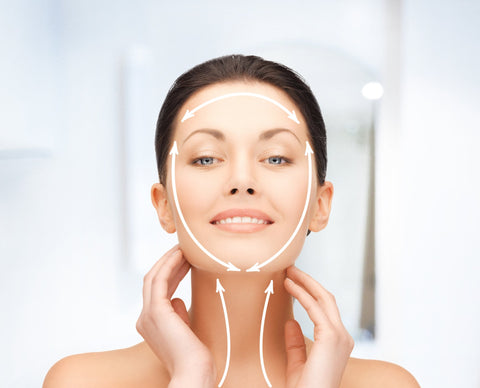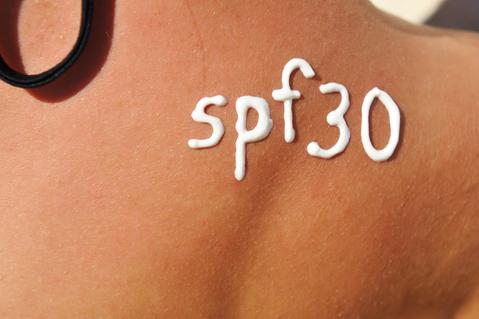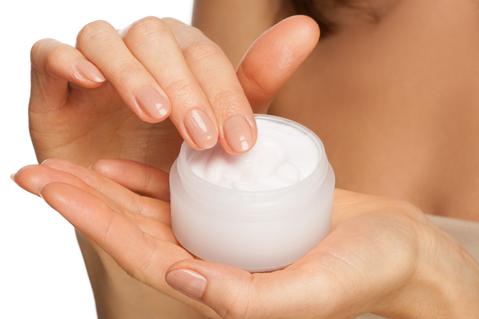
Crepey skin has many names: elephant skin, paper-thin skin, and grandma skin just to name a few. Typically, it first appears on the elbows where the skin is both thin and constantly being stretched. It wouldn’t be so bad if crepey skin stayed exclusively on your elbows. Unfortunately, crepey skin can appear anywhere—your neck, your hands, even your décolleté.
New York dermatologist Macrene Alexiades, MD admits, “Crepey skin is one of the most difficult signs of skin aging to prevent because it has so many different causes and can occur on so many different parts of the body.”
That said, there are a number of effective treatments for crepey skin that can return your skin to its youthful smoothness. This article will discuss four of those treatments. Before that, we’ll define crepey skin and show you what causes it.
Crepey Skin Defined
Crepey skin is so named because of its crepe-like, crinkled texture. Think about the skin of an elephant and you’ll understand why crepey skin is most often referred to as elephant skin.

Many wonder if crepey skin and wrinkled skin are the same thing. They’re not. Crepey skin forms, in large part, because of a thinning of the top and middle layers of skin (the epidermis and dermis respectively). Wrinkles form, in large part, where repeat movements occur. Areas such as your face, neck, and chest are prime areas for both crepey and wrinkled skin.
The Causes of Crepey Skin
The causes of crepey skin are myriad. Melbourne, Florida dermatologist Anita Saluja, MD explains. “The sun, loss of collagen and elastin, and a decline in moisture due to aging can all cause changes in texture.” These changes in texture lead to crepey skin. Let’s look at those causes in a bit more detail.
1. Age

Age is one of the main causes of crepey skin. As we age, the collagen and elastin in our skin have a tendency to breakdown. Without the collagen and elastin for support, the skin can no longer return to its original position and so begins to sag and crinkle.
While you can’t stop the aging process, you can slow down, prevent, and even repair the damage done by the loss of collagen and elastin. As we’ll see in the treatments section, a number of options can help restore the youthful beauty of your skin.
2. Sun Exposure

Sun exposure is another major factor in the formation of crepey skin on your décolleté, hands, and face. Sun exposure exacerbates and accelerates the breakdown of the collagen and elastin mentioned in the previous section. UV rays also damage the skin’s natural ability to repair itself and remove free radicals and other toxins.
In addition, sun exposure contributes to the lack of moisture in the skin. This lack of moisture makes the skin dry and restricts its movement. These two conditions, then, speed the wrinkling process. Damage to the skin of your décolleté can best be prevented by covering up when you go outside. As we’ll see in the treatments section, when it’s not possible to cover up completely, sunscreen is your next best option.
4. Gravity
As the skin loses moisture and suffers from collagen and elastin breakdown, gravity begins to take a toll. Side sleeping is a particularly damaging habit that many of us do every night. When you sleep on your side, gravity pulls the top breast further past the midline than it was meant to go. In addition, the skin of the décolleté is thin and delicate and more susceptible to damage than other parts of the body. Couple that with the length of time we sleep—6 to 8 hours—and you can see why crepey skin can easily form on the skin of the décolleté.
Treatment for Crepey Skin
As damaging as age, sun exposure, and gravity can be, effective treatments do exist to help prevent, and even repair, crepey skin. Below are the four best crepey skin treatments.
1. Sunscreen
Sunscreen should be one of the cornerstones of your beauty regimen. Other than covering up completely, it is the best way to prevent the sun’s UV rays from damaging your skin.

Whether you suffer from crepey skin or not, it’s important to apply sunscreen to exposed skin every day before you leave the house or office. If you’re going to be outside, or even in a car or sitting near a window, remember to re-apply an SPF 30 to SPF 45 sunscreen every 2 hours.
2. Injections
Injections are perhaps the most extreme form of treatment for crepey skin. Fillers and Botox ™ are the two most common options although Botox ™ is not recommended for the thin skin of the décolleté.
With this treatment, fillers such as hyaluronic, synthetic, collagen, and autologous are injected into the skin to fill. The filler then “fills in” the space left by the breakdown of collagen and elastin. The filler lends support to the skin and pushes out from underneath to smooth the visible layer of skin.
Though injections are fast-acting, they can be painful and may require multiple treatments before the desired results are achieved. In addition, injections—be they fillers or Botox ™ —have a high potentiality for side effects. These side effects can range from small bumps or a bluish tinge to the skin (which may go away but can be permanent) to permanent nerve damage and muscle paralysis.
3. Creams

Topical treatments for crepey skin are an inexpensive and easy way to protect and repair the skin. While not as fast-acting as the previous two options, creams are definitely less invasive. They also don’t have the potential for serious side effects.
For best results, choose a cream like SiO Beauty’s Décolleté Serum. SiO Beauty’s Décolleté Serum is designed to rejuvenate and protect the delicate skin of the décolleté all day long. Apply the serum to the skin of your décolleté every morning to see wrinkle-smoothing, hydrating, and brightening effects.
4. SkinPads
Silicone skinpads are a very effective balance between creams and injections. Products like SiO Beauty’s SkinPad can provide medical-grade results without the pain or expense of injections or surgery. And unlike creams by themselves, the SiO Beauty SkinPad provides fast-acting, wrinkle-smoothing effects while you sleep.
Used in conjunction with the SiO Beauty Décolleté Cleansing Discs and the SiO Beauty Décolleté Serum (mentioned above), the SiO Beauty SkinPad provides all-night and all-day healing at a fraction of the cost of injections or surgery. Just cleanse the décolleté with an SiO cleansing disc before bed, wear the SiO SkinPad while you sleep, and then apply the SiO serum in the morning.
New York City dermatologist Dr. Ryan Neinstein elaborates on the SiO Beauty 24-Hour System:
“The décolleté is the most difficult area to treat for my patients. The skin is quite thin and it’s constantly exposed to the elements and doesn’t have the building blocks of healing that other areas of the skin have. Using the SiO Beauty SkinPad overnight, you plump up the wrinkles and give the appearance of silky smooth skin.“
Treat Crepey Skin at Home Before Trying Surgery
Injections and surgery should always be your last resort. Home treatment options like the SiO Beauty 24-Hour System can provide fast-acting, long-lasting results without the need for doctor’s visits and painful procedures. In addition, home treatments don’t come with the risks of side effects that plague the more invasive options. The SiO SkinPad is clinically tested and dermatologist approved to be non-irritating and safe for the skin of the décolleté. The SiO SkinPad is based on the same science that is used by doctors and surgeons to heal scars and burns. If the same technology can be used to heal those types of wounds, imagine what it can do for wrinkled or crepey skin. So restore the collagen and elastin in your skin and prevent crepey skin from forming by treating your décolleté at home while you sleep.

Want the exclusive?
SKINCARE STORIES & TIPS GALORE
Sign up for our newsletter to get early access to promotions, the inside scoop on new products and skincare tips.

Sign up for our newsletter.
